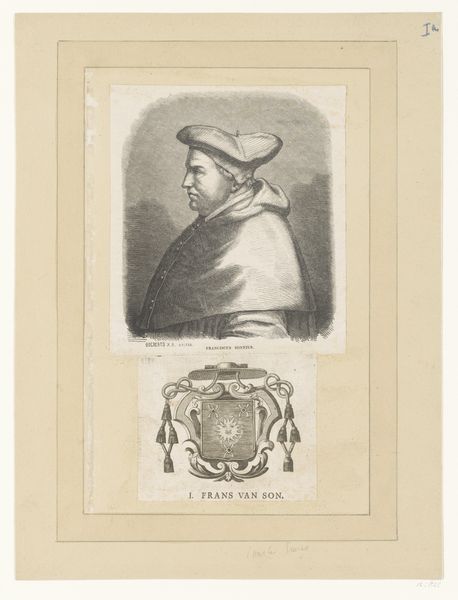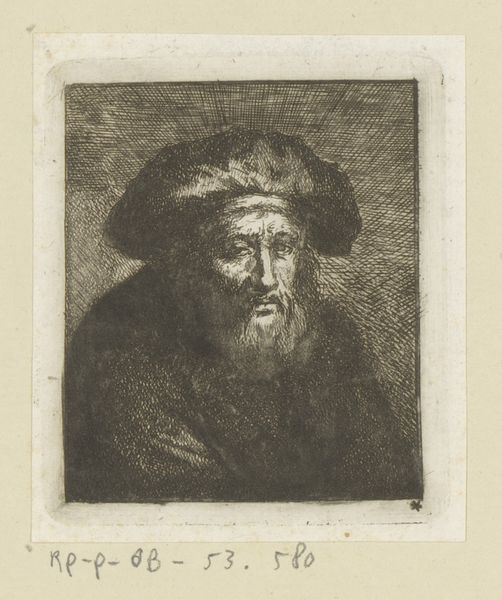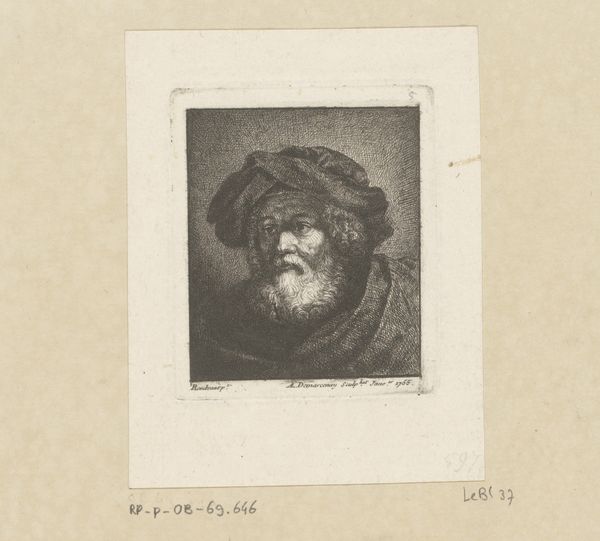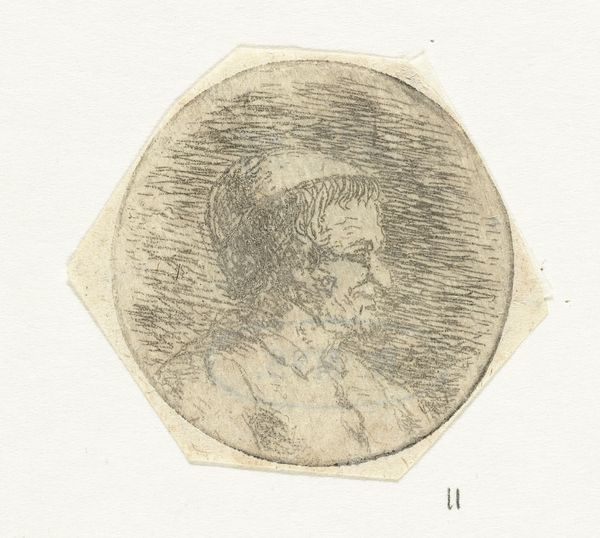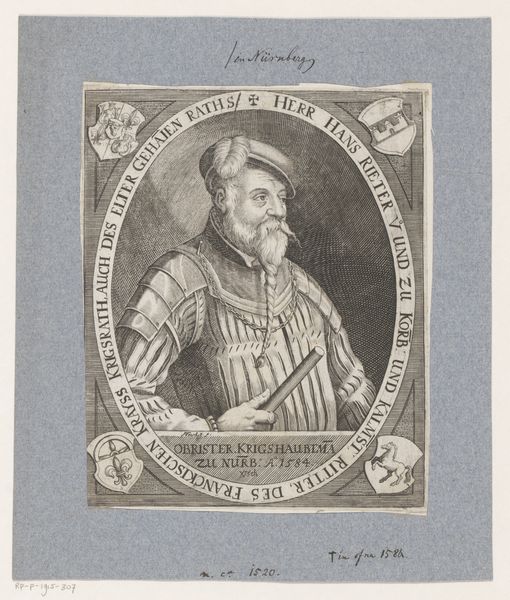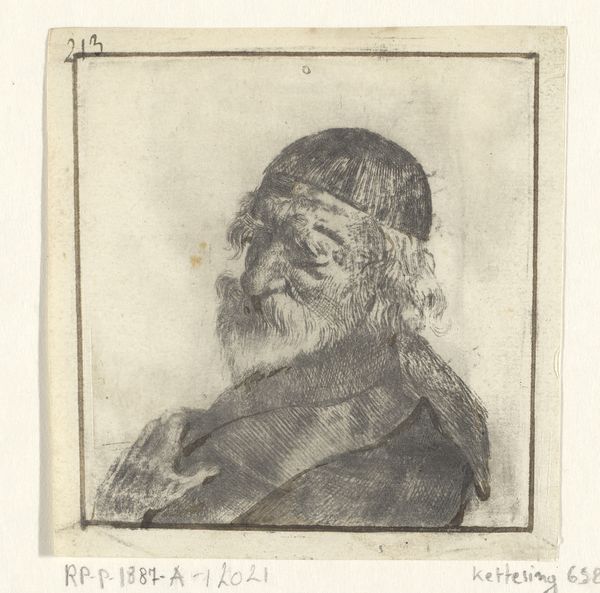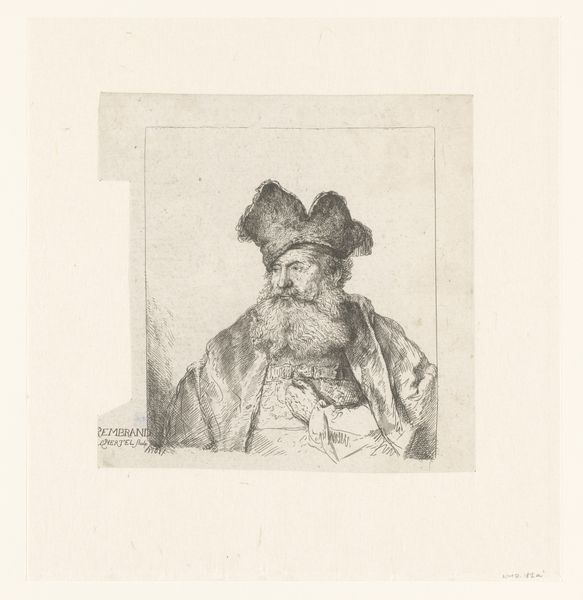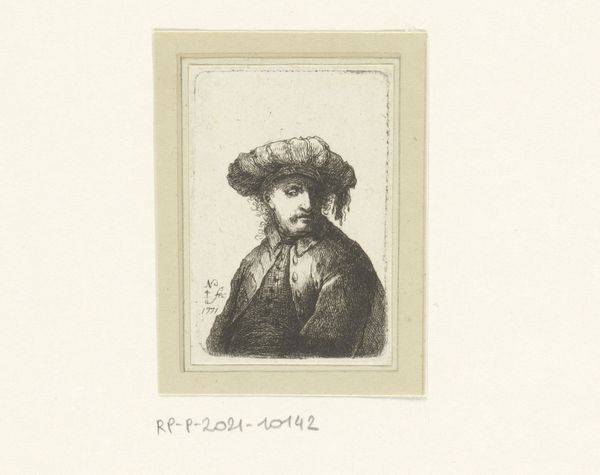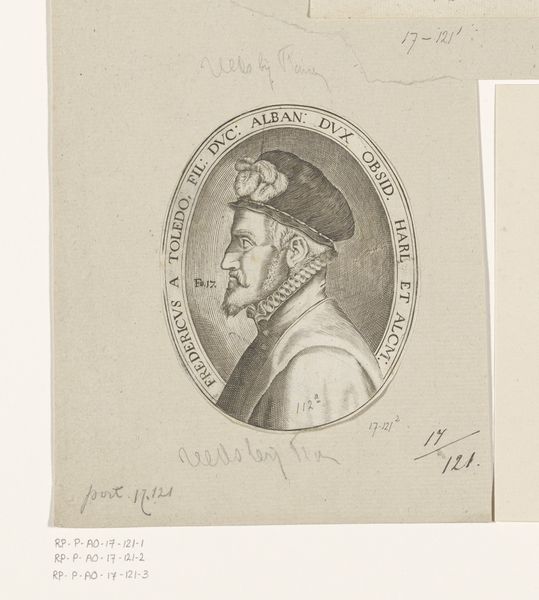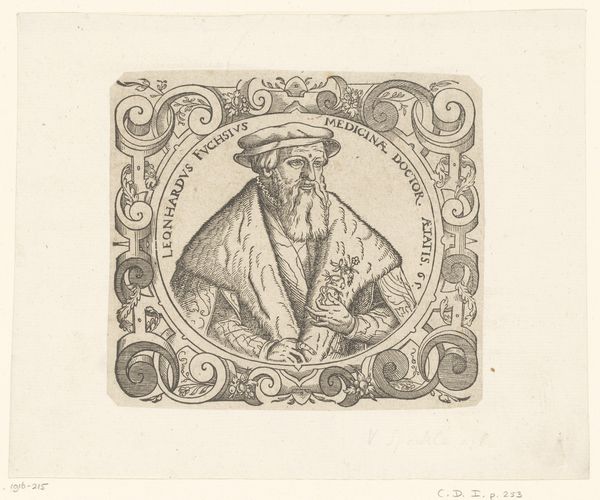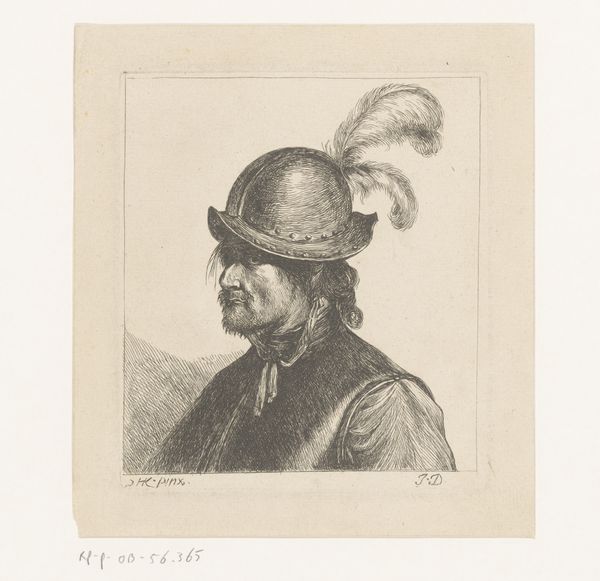
Dimensions: height 99 mm, width 77 mm
Copyright: Rijks Museum: Open Domain
Johann Friedrich Morgenstern created this tiny portrait of an unknown man with a turban using etching, a printmaking process, sometime in the late 18th or early 19th century. Etching involves coating a metal plate with a waxy, acid-resistant ground. The artist then scratches an image into the ground, exposing the metal underneath. When the plate is immersed in acid, the exposed lines are eaten away, creating grooves. Ink is then applied to the plate, filling the etched lines, and the surface is wiped clean. Finally, paper is pressed against the plate, transferring the ink and creating a print. The fine lines and delicate shading in this portrait show Morgenstern's mastery of this intricate process. But etching, while capable of great subtlety, was also relatively reproducible. It became an important medium for disseminating images widely, contributing to the growth of visual culture and consumption. So, while this image may seem like a straightforward portrait, it's also a product of its time, reflecting the increasing accessibility of art through printmaking.
Comments
No comments
Be the first to comment and join the conversation on the ultimate creative platform.
